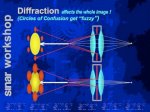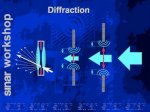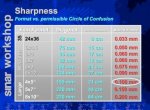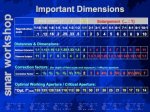Georg R. Baumann
Inactive
Greetings,
I am trying to understand something about diffraction with reference to lenses such as the Sinaron Digital AF Planar T* 2.8/80
The future in optics appears to look like this here:
However, if I look at the datasheet here : Sinaron Digital AF Planar T* 2.8/80
I have trouble understanding how to read that in respect of the optimum aperture on such a high end lense. May be it is not possible to read that from the given information, at least I can not conclude above what aperture diffraction comes into play, but this is just my own lack of education in optics I suppose.
See, in the DSLR world, I know if I go over f11 on my zuiko digital 14-54mm, diffraction will come into play. I know this from experience and from talking to people who use the same lense.
But what I wonder is, can such information be learned about just by looking at the datasheet?
Sorry if this is a very basic question, but I find it always interesting to know in what range a lense performs on it's very optimum, and if there would be an easy way to know this for any given lense, that would be helpful in deed to minimise the learning curve on new optics.
I am trying to understand something about diffraction with reference to lenses such as the Sinaron Digital AF Planar T* 2.8/80
The future in optics appears to look like this here:
- Charles S. Johnson, Jr. Professor of Chemistry Emeritus at the University of North Carolina at Chapel Hill. -The fundamental limitation on DoF is imposed by diffraction effects. Does technology offer any hope in the future for circumventing the diffraction barrier? The answer sounds almost like science fiction. In principle materials with negative refractive index (NIM) make “perfect” lenses that are not limited by diffraction. No naturally occurring NIM exists, but artificial materials (metamaterials) have been fabricated that display negative refractive index for microwaves. In 2005 a NIM material, consisting of minuscule gold rods imbedded in glass, was reported that works with near IR wavelengths. No NIM’s are in sight for visible light; and if one is constructed it will probably only be effective at one wavelength - but it is fun to fantasize. NIM’s are hot topics in the optics world, and there are many papers exploring their weird properties.
However, if I look at the datasheet here : Sinaron Digital AF Planar T* 2.8/80
I have trouble understanding how to read that in respect of the optimum aperture on such a high end lense. May be it is not possible to read that from the given information, at least I can not conclude above what aperture diffraction comes into play, but this is just my own lack of education in optics I suppose.
See, in the DSLR world, I know if I go over f11 on my zuiko digital 14-54mm, diffraction will come into play. I know this from experience and from talking to people who use the same lense.
But what I wonder is, can such information be learned about just by looking at the datasheet?
Sorry if this is a very basic question, but I find it always interesting to know in what range a lense performs on it's very optimum, and if there would be an easy way to know this for any given lense, that would be helpful in deed to minimise the learning curve on new optics.





